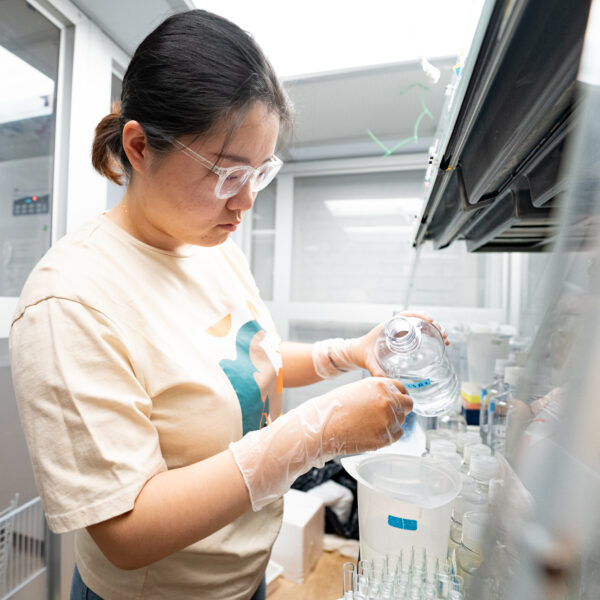Iron limitation and ocean warming on marine cyanobacteria
Hello! My name is Ran Duan. I am a second-year Ph.D. student in the marine environmental biology department at USC. I’m doing my research in Prof. Dave Hutchins’ lab about how iron limitation and ocean warming affect marine cyanobacteria. It’s a great honor to be nominated as one of the Wrigley Institute Summer Graduate Fellows this summer.

Ocean warming and iron limitation are both primary factors controlling productivity and the food web in the ocean, and these factors are changing rapidly with ongoing climate change. Global temperatures are estimated to increase by 1.5-2 ℃ by the end of the 21st century, due to high anthropogenic emissions of greenhouse gases, including CO2 and N2O. Warming intensifies the stratification of the upper ocean and reduces the transport of nutrients from the deep ocean to the surface.
Iron (Fe) availability is decreased in the modern oxidizing ocean, and cyanobacteria have more demand for Fe due to the sharing of protein complexes in photosynthesis and respiration electron transport. Hence, Fe also plays a key role in controlling the productivity of diazotrophic cyanobacteria in the warming ocean. Iron and warming may both strongly influence the physiology of marine cyanobacteria. Cyanobacteria may evolve various strategies to acclimate to combined iron and warming stress by changing the expression of cellular pathways. Considering its importance to nitrogen biogeochemistry and primary productivity in the tropical and subtropical ocean, it is important to understand how cyanobacteria respond to iron and warming in the future ocean.

Some short-term experiments have helped to understand how diazotrophic cyanobacteria may respond to the changing ocean- but it is unknown whether evolutionary adaptation can also improve genetic fitness in the future ocean. So far, no studies have been conducted about the long-term adaptation of diazotrophic cyanobacteria to ocean warming and Fe limitation. Crocosphaera as a diazotrophic cyanobacterium is one of the primary global nitrogen fixers. This fixed nitrogen is consumed by other trophic levels including phytoplankton and zooplankton, thus supplying a key nutrient for food webs in marine ecosystems. In addition, cyanobacteria blooms are recurrent phenomena in coastal estuaries, and strongly influence zooplankton and pelagic fish. With the simultaneous C and N fixation in diazotrophic cyanobacteria, primary production is stimulated in the upper ocean, followed by the increased export of organic C to the deep ocean.
My research aims to understand how Crocosphaera will adapt to long-term iron limitation and warming conditions physiologically and molecularly, and determine the difference between short-term responses and long-term adaptation. This summer, I continued this long-term experiment with an experimental matrix of limiting and replete Fe concentrations across multiple temperatures which have been underway for two years in our lab. I measured physiological data including in vivo fluorescence and cell counts for each treatment. The growth rates were increased at high iron, but high temperature decreased the difference in growth rates of high iron to low iron, indicating that warmer temperatures may alleviate iron limitation in the future ocean.

In the subsequent study, I will collect transcriptomic and proteomic samples to explore molecular mechanisms for adaptation. These long-term expression responses will be compared with the initial sampling to assess genetic changes associated with adaptive phenotypic changes. We hypothesize that Crocosphaera may experience different adaptive responses as temperature increases from the lower end to the higher end of its thermal range. These responses may evolve specific phenotypes after long-term selection by Fe limitation and warming, which is significant for understanding the biogeochemical cycles and evolutionary mechanisms of diazotrophic cyanobacteria and predicting the nitrogen supply and primary productivity in the future ocean. Furthermore, The spatial and temporal variability in distributions and community diversity of diazotrophic cyanobacteria can impart distinct biogeochemical signatures in the ocean, which will be largely influenced by various environmental factors, indicating that these organisms could be early responders to future changes in the ocean.
I would like to thank the Wrigley Institute again for the support of my summer research!

